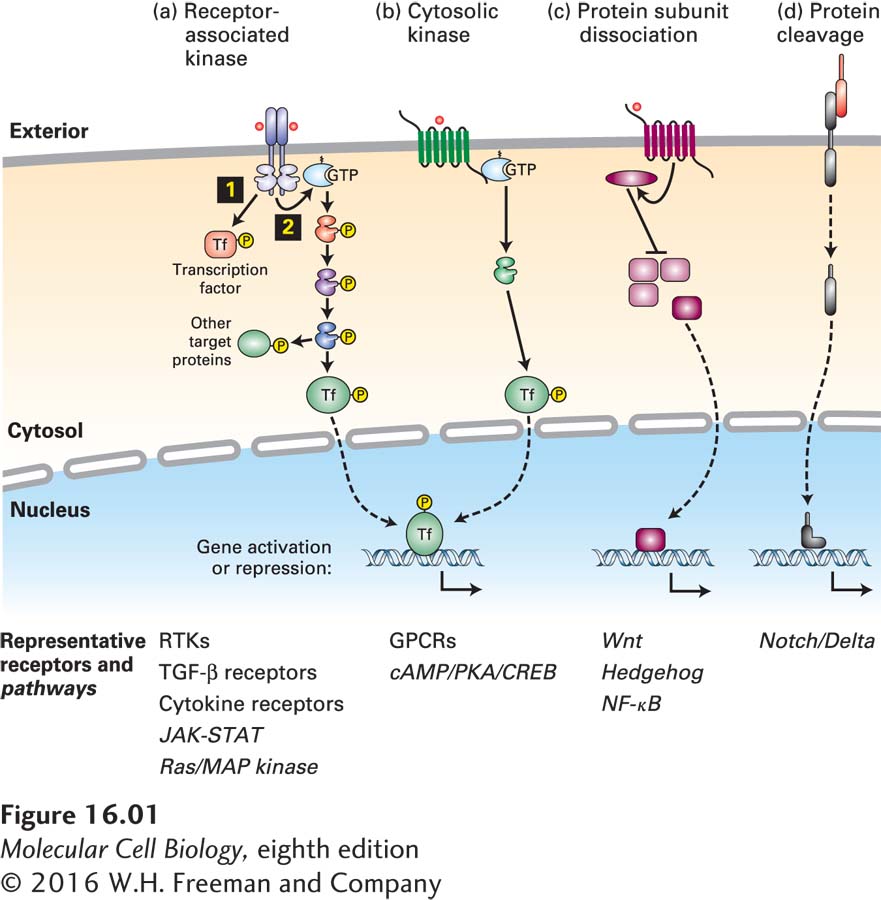
FIGURE 16- 1 Several common types of cell- surface receptors and signal transduction pathways. (a) The cytosolic domains of many receptors are protein kinases or are tightly associated with a cytosolic kinase; commonly the kinases are activated by ligand binding followed by receptor dimerization. Some of these kinases directly phosphorylate and activate transcription factors 1 or other signaling proteins. Many of these receptors also activate small GTP- binding “switch” proteins such as Ras 2. Many signal transduction pathways, such as those activated by Ras, involve several kinases; in these pathways, one kinase phosphorylates and thus activates (or occasionally inhibits) the activity of another kinase. Many of the kinases in these pathways phosphorylate multiple protein targets, including transcription factors, which are usually different in different cells. (b) Other receptors, mainly those with seven membrane- spanning segments, activate the larger GTP- binding Gα proteins, which in turn activate specific kinases or other signaling proteins. (c) Several signaling pathways involve disassembly of a multiprotein complex in the cytosol, releasing a transcription factor that then translocates into the nucleus. (d) Some signaling pathways are irreversible; in many cases, proteolytic cleavage of a receptor releases an active transcription factor.
[Leave] [Close]